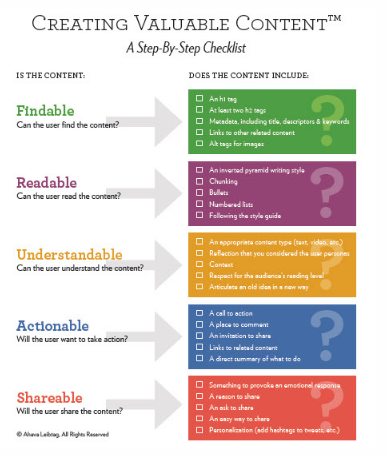
When it comes to content marketing, there are ways to write content so it actively markets you and your business without being “in-your-face” sales copy or boring product reviews or press releases.
I’m reminded of an excellent book on creating effective website design called Don’t Make Me Think.
The premise is that a customer searching for products and services online shouldn’t have to figure out how to find what they’re looking for on your website.
When it comes to reading your blog, however, please, please DO make me think! As I said last week, your readers may scan your post, without getting their thought processes going, and move on.
Your blog posts should have meaty content that stimulates your audience to ask questions, to comment, to agree wholeheartedly, or disagree vociferously.
How can you do that?
Here’s my list of ways to engage the brain, for example, in a blog post:
- Ask a question that can’t be answered (without thinking for a few minutes, at least)
- Describe an ethical conundrum and ask readers to contribute solutions
- Ask your audience for their top 3 tips for …. (insert a common problem your customers have)
- Write about a problem you experienced or a mistake you made, and ask, “What would you have done?”
- Describe a most pivotal moment in your business, and ask others to share their story
- Write about a situation facing a customer and ask readers to contribute ideas and projected outcomes
- Suggest some ideas and ask for more ideas…(hint, hint)
- …
- …
- …
Okay, now it’s your turn. What methods do you use? How can you write blog posts that stimulate readers to think and even actively participate?
Bonus question: How does doing this actually work to market your business?













